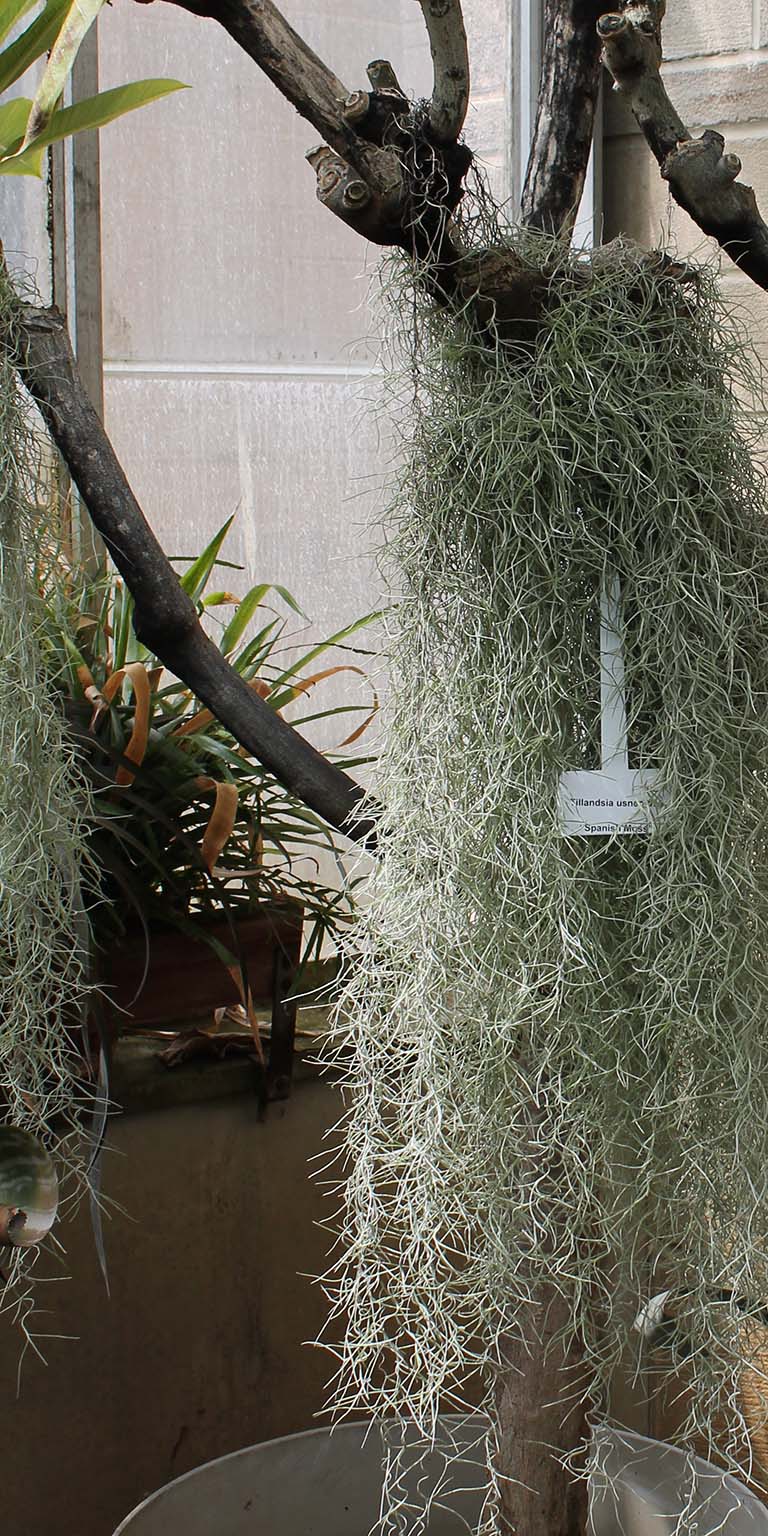Tillandsia usneoides is a familiar, picturesque plant often seen dangling in masses from large trees in the southeastern United States from Virginia to Texas and southward into Mexico and Central and South America. Although the species is well known as Spanish moss, it is neither a moss nor is it native to Spain.
T. usneoides is known as an "air plant" because it is an epiphyte. An epiphyte is a plant which has no roots and grows on the surface of another plant for support, getting its moisture and nutrients from the air, rain, and surrounding debris. Unlike a parasite, an epiphyte does not necessarily negatively affect its host. T. usneoides prefers high humidity areas such as lowlands along rivers and bodies of water. It is sensitive to pollution, so it is not commonly found growing in cities.
Many creatures make use of T. usneoides. Some birds use the plant as nesting material while others such as the Yellow-throated Warbler and Northern Parula build their nests in clumps of the plant. At least three species of bats call T. usneoides home. Snakes find shelter within the plant as well. One species of jumping spider (Pelegrina tillandsiae) can only be found in T. usneoides.
People have used and use T. usneoides for a variety of purposes—including mattress stuffing, garden mulch, arts and crafts, packing material, and building insulation. The tough, curly inner fibers of the plant were woven into coarse cloth for bedding, floor mats, and horse blankets as well as twisted into rope. The plant was used in folk medicine to make a tea for chills and fever.


